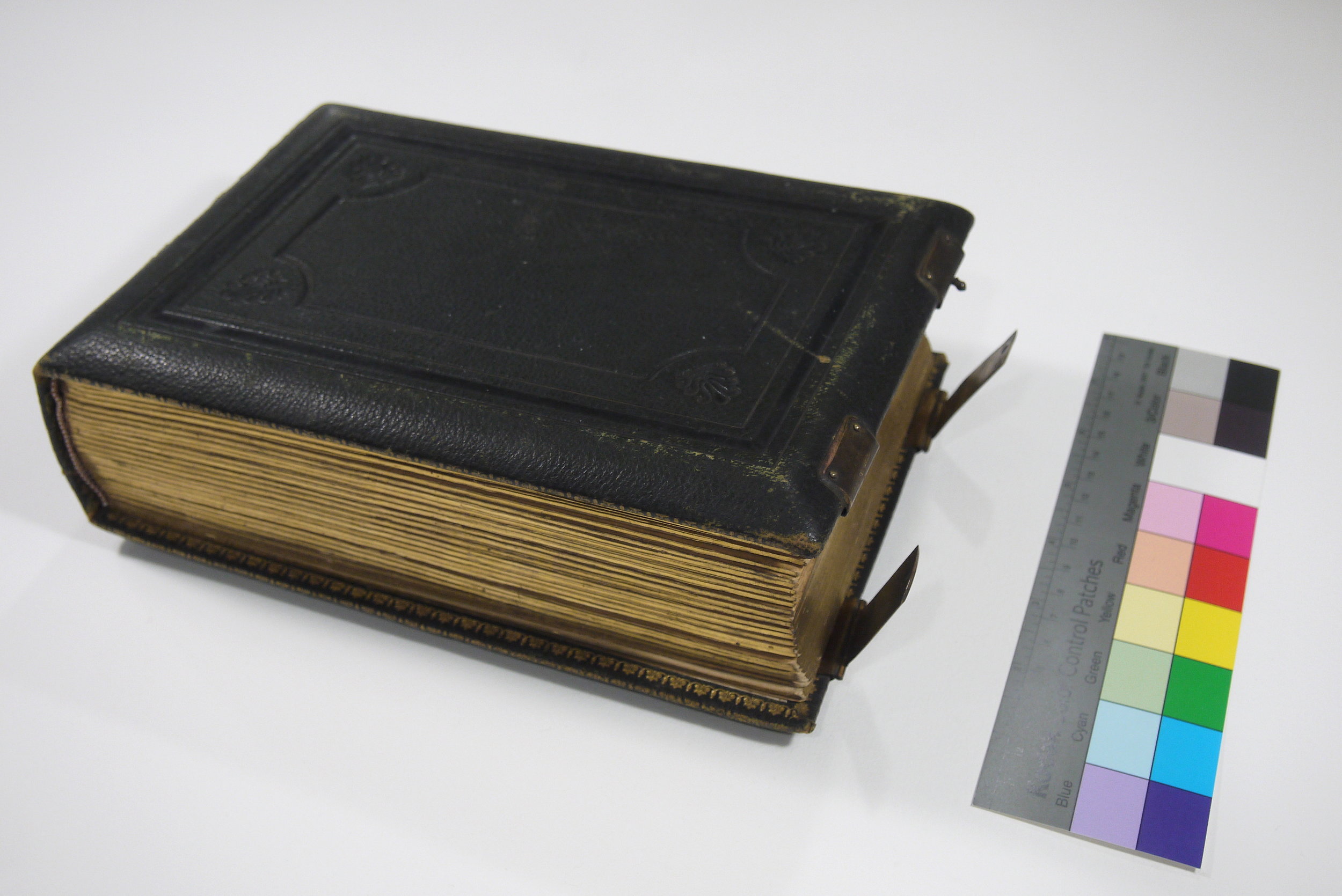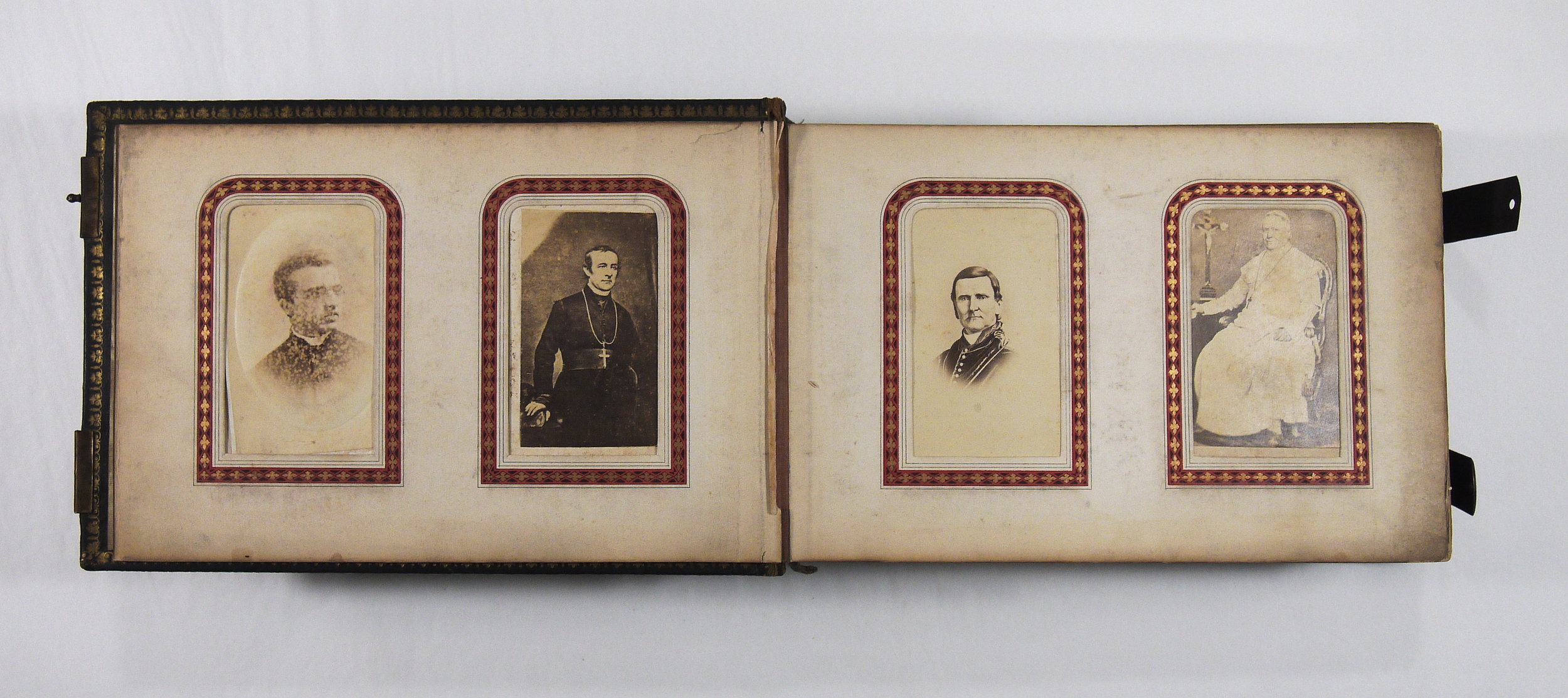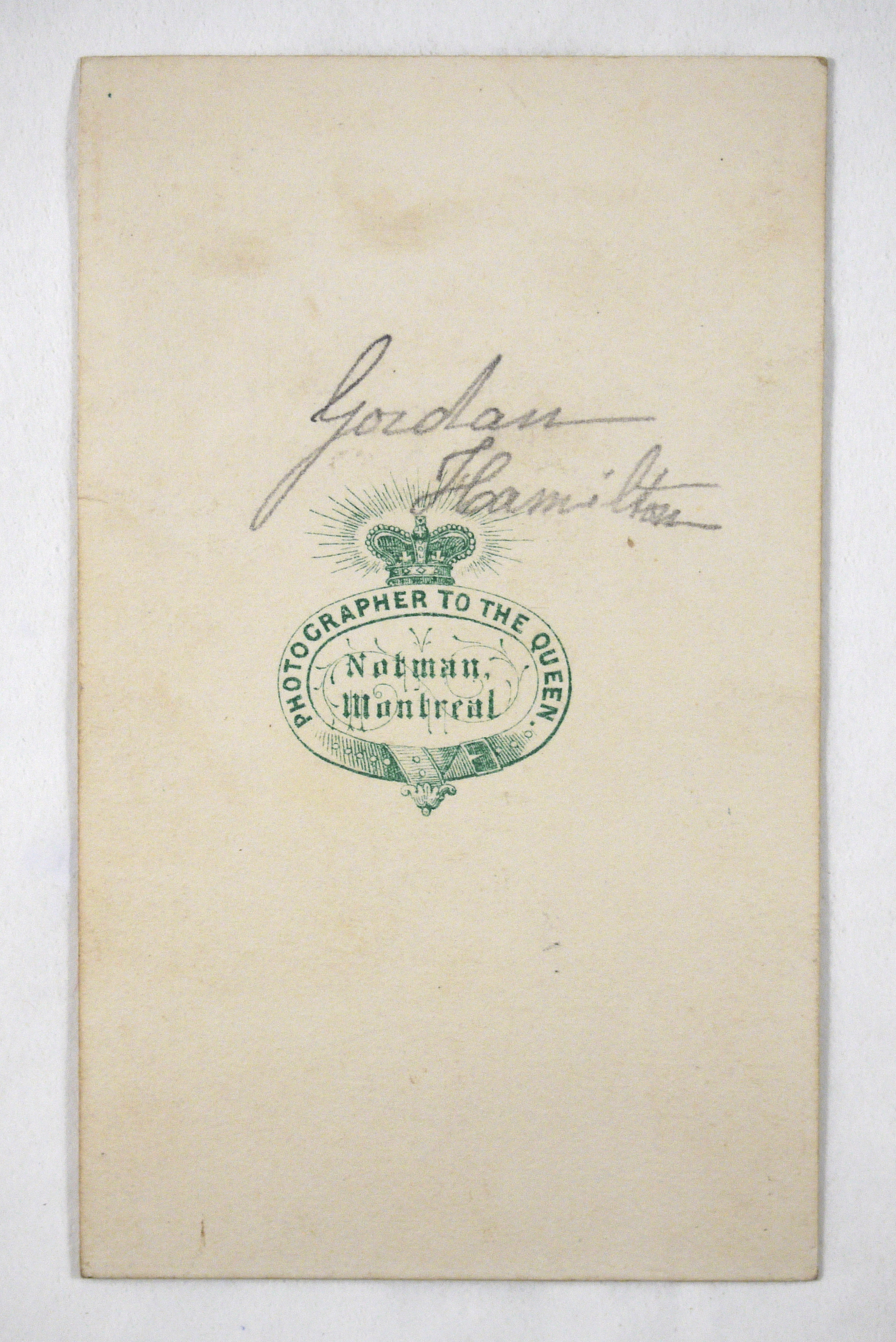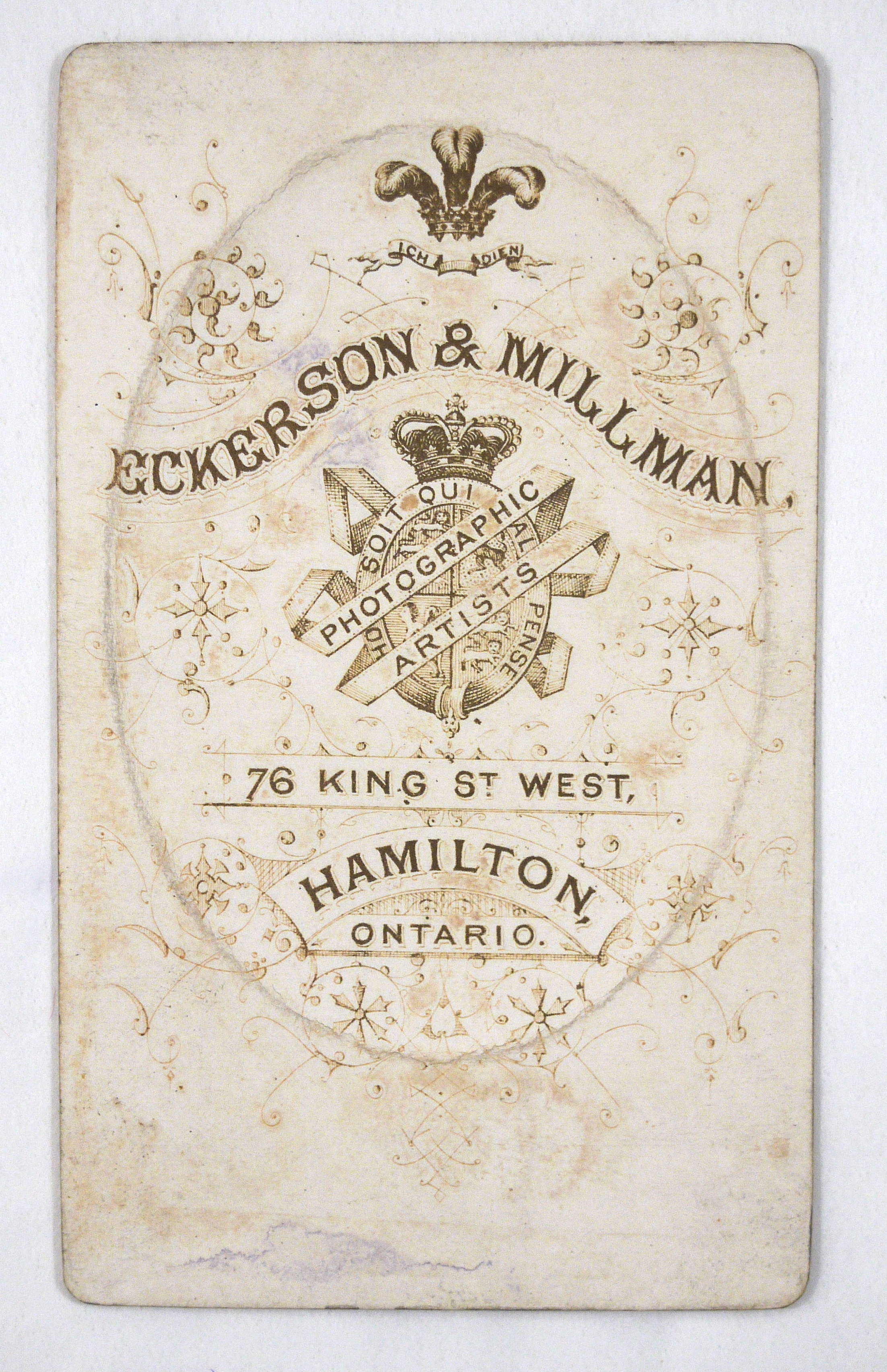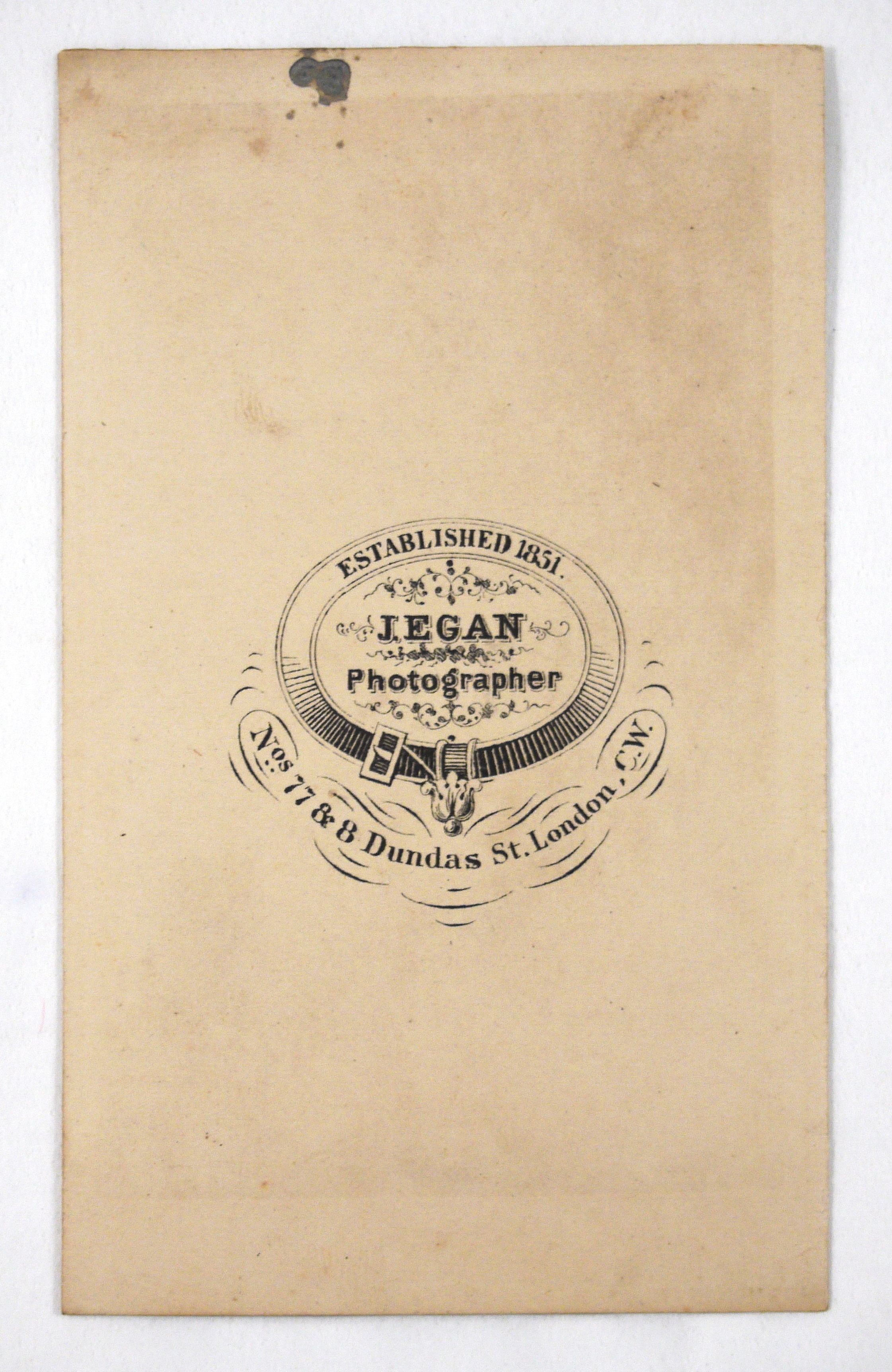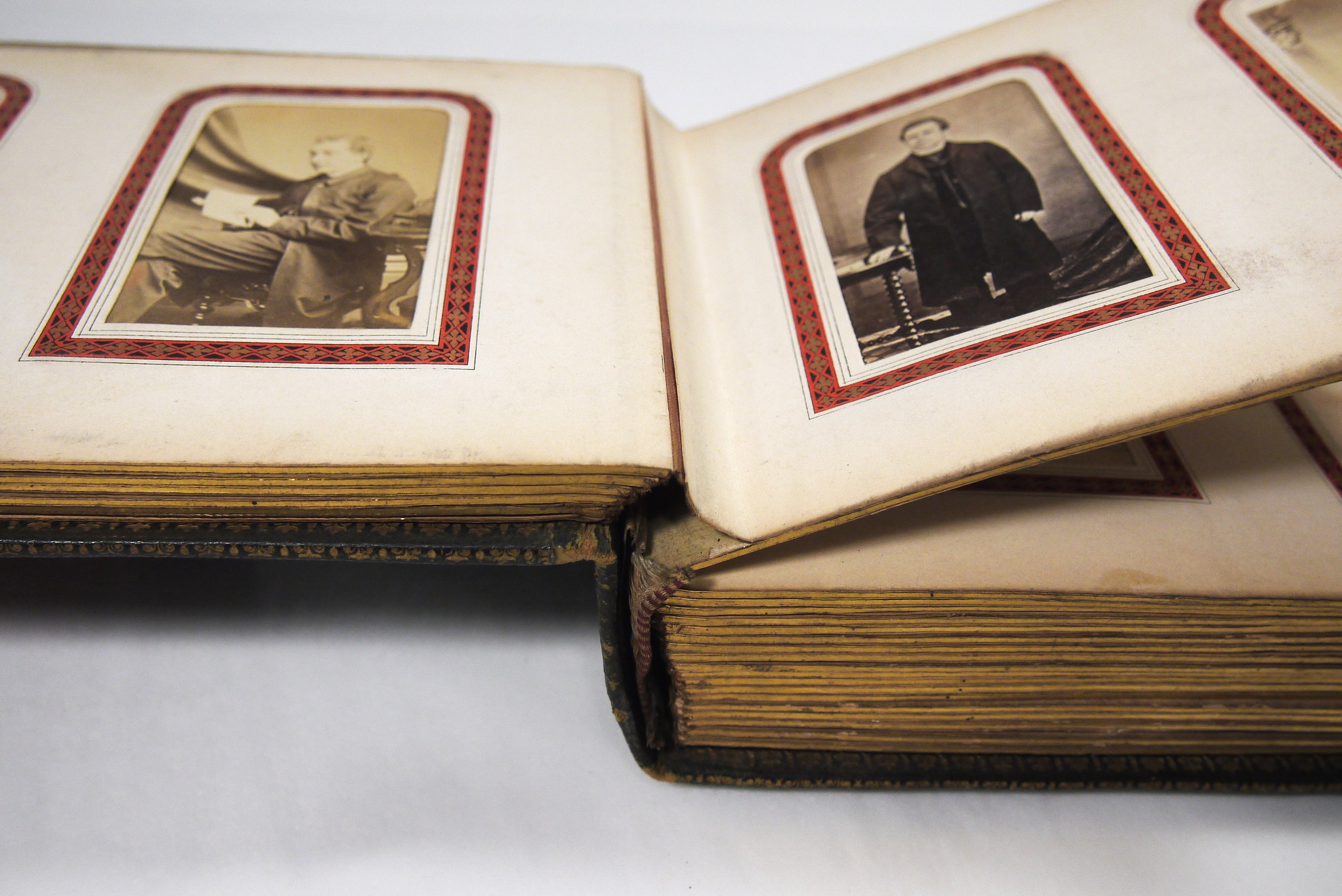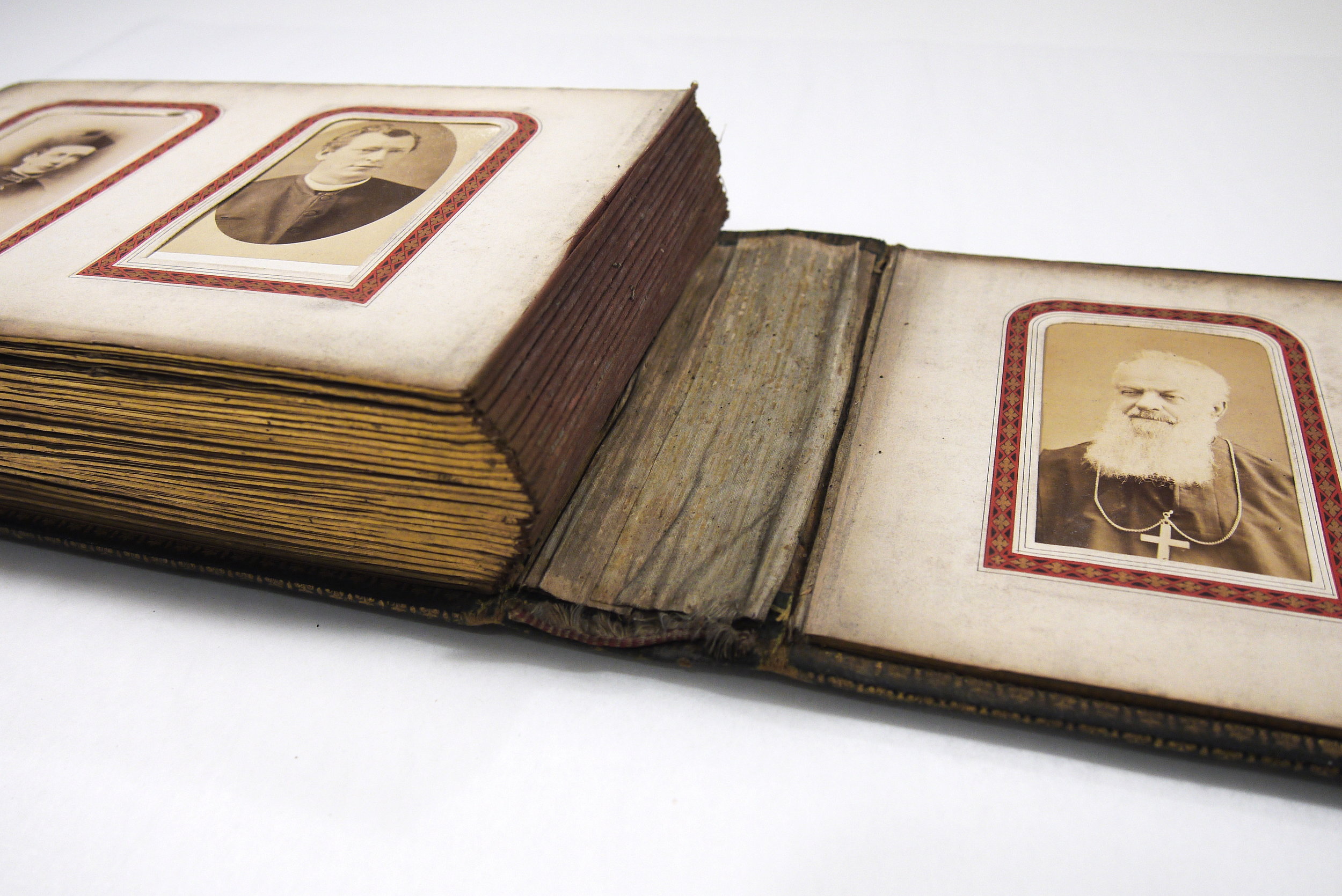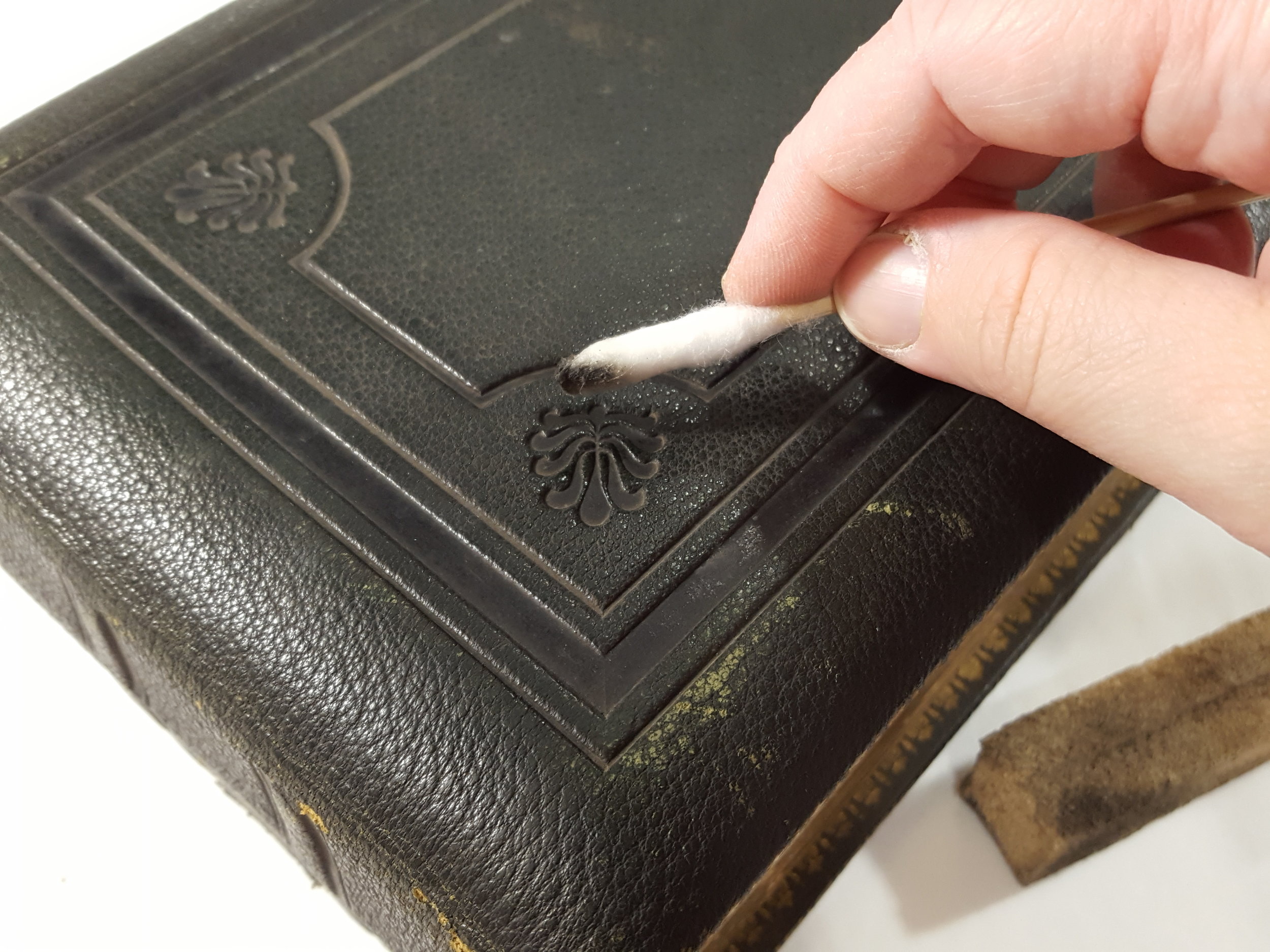At Book and Paper Conservation Services the variety of objects we treat is broad, but they all have one thing in common - the owners or stewards of the objects have deemed them important enough to be preserved. We often receive objects of fascinating historical significance, and learning about the provenance of the item is one of the thrills of the job for an art conservator.
An intriguing item came through our studio recently - a 19th century carte de visite photo album with an interesting theme and provenance. The album is from the collection of The Bishop Farrell Library & Archives at the Diocese of Hamilton, in Hamilton, Ontario, Canada.
The Bishop Crinnon carte de visite photograph album, during conservation treatment.
History & Context
Although it was most recently part of the library of Bishop Ryan, the album originally belonged to Bishop Crinnon, who was the 2nd Bishop of the Diocese of Hamilton from 1874 - 1882. An inscription on the front free end paper indicates it was a gift presented to Crinnon in London, Ontario, in September 1864, when he was a dean of the Diocese of London. It was gifted by Fr. Joseph A. Kelly, a Dominican Friar serving at the time as the prior of St. Peter’s Church in London. Crinnon obviously brought the album with him when he transferred to Hamilton, where it eventually joined the collection of the Diocese.
The Bishop Crinnon carte de visite album before conservation treatment.
The album contains 89 cartes de visite displayed in specially made pages, inserted through slots in the bottom of two stiff sheets of cardboard and visible through die cut portrait openings. A large number of the photographs depict ecclesiastical figures, some identifiable and some not. Several of the cards have the sitter's name included, either printed on the card or inscribed by hand. It is an intriguing portrait collection of clergy from the early 19th century.
Bishop Crinnon carte de visite album, showing a spread of pages featuring portraits of clergy.
Cartes des Visite
The album is an example of a popular collecting trend of the second half of the 19th century, but with an important twist of theme and local significance. The carte des visite, a photograph mounted on a piece of card the size of a formal visiting card, was a common way to immortalize both celebrities and ordinary people, and they were produced by photographic studios around the world. Sitters would have cards produced for friends and family, and purchase or trade images of important personalities including royalty, politicians and men of arts and letters.
Carte de visite from the Bishop Crinnon Album of Rev. Edward Gordon, first Vicar General for the Diocese of Hamilton
Verso of carte de visite, with inscription in graphite and logo of the Notman Studio, Montreal, Canada.
In the case of this album, the collector has compiled a group of photographs featuring ecclesiastical figures, along with some other notable heros of the day. The portraits may have been commercially distributed - much the way postcards are bought in souvenir shops today - or may have been gifts from personal acquaintances of the collector, especially if he was involved in the Roman Catholic community. Many have logos of photography studios in Canada printed on the verso, including ones from London, Hamilton and Toronto. There is at least one from the well-known Notman Studio in Montreal. The album is rich with historical context and provides an interesting opportunity for a study of Roman Catholic clergy in Canada in the late 19th century; the Archives of the Diocese of Hamilton are currently exploring the album's history.
Conservation Treatment
The album arrived in our studio in rough condition. The main issue was damage to the binding, caused by years of handling of the inherently delicate materials; there was also a fine layer of grime on all of the materials, dulling the vibrancy of the pages and photographs.
Facing paper lifting from a page with the weight of the album.
Delicate cloth lining has broken at joint of the final page.
Photograph albums were manufactured in a variety formats in the 19th century, and a careful study was made of the mechanics of this particular album in order to understand the structure and to design an appropriate repair solution. The fabric lining attaching the thick card pages together had torn at the joint of the final page, a location which received a lot of strain whenever the album was accessed. As well, the weight and motion of the pages had caused delamination of the facing paper at several locations throughout the album. Repairs needed to be sympathetic to the original binding, while providing strength and stability, and still maintaining the mechanical action originally intended.
New endbands were applied, in a style that matched the fragments of the originals.
Japanese tissue adhered with wheat starch paste was used to line the spine and repair the joint, the spine was strengthened with a new card stiffener, and new endbands were applied, in a style matching the remnants of the original materials. The binding and pages were surface cleaned to remove the grime, and each photograph was carefully removed from its slot, cleaned, documented on both recto and verso, and replaced.
Each photograph was carefully cleaned, on both recto and verso, before being documented and replaced in the album.
The binding was cleaned to remove surface grime.
Before and after surface cleaning of the pages and gilding around the edge of the album.
The end result allows the album to be opened, carefully and with proper support, so that the cartes des visite can be viewed by researchers at the archives. The repairs have restored the original function of the album, and the cleaning has rejuvenated the portraits. Preservation of the photograph album will allow it to remain in the best possible condition for future study and appreciation, and we are very pleased to have worked with the Bishop Farrell Library & Archives at the Diocese of Hamilton to preserve this interesting artifact.
After conservation treatment, the Bishop Crinnon carte de visite photograph album is clean and stable.
If you are interested in conservation for archival materials in your own collection, don't hesitate to get in touch with us. We provide conservation and restoration for documents, photographs and rare books, and we'll work with you to devise a preservation strategy to meet the needs of your object. Check out our portfolio of treatments and contact information below.




